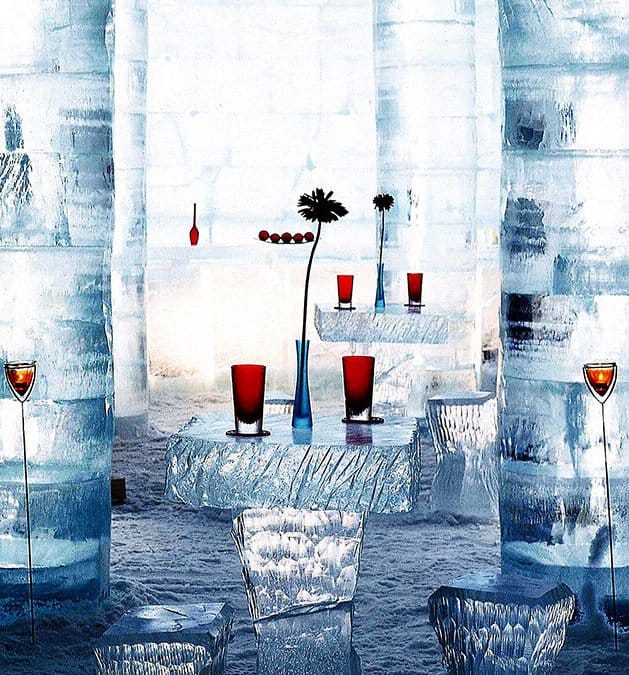With unparalleled landscapes, wildlife and historical treasures, the only difficult thing about planning a trip to Botswana is figuring out what you’re going to have to put off until next time. Here are some suggestions for possible itineraries to enable you to maximize your time. They are all customizable to your wishes. Or if you already have a plan and would like us to check it and provide suggestions, choose the ‘help you plan’ section.
Botswana: Exceptional Luxury
Best time to visit: May to October
How long: 14 nights
Price: From €20.500 pp excl. flights (based on 2 people sharing)
Fly into Maun or Kasane, and then get a charter flight to Shakawe, where you will be transported to your lodge in the Okavango Panhandle for the next three nights. The Okavango Panhandle is a very narrow section of the delta that’s cut lengthwise by its eponymous river. Offering affordable prices and great value, the safari industry here is seemingly from a bygone era. The birding is top notch and the lagoons are often places of interest. The next 3 days you have time to relax here and explore the Okavango Panhandle and Tsodilo Hills, which is a few hours away and can be done as day trip. one of Africa’s greatest outdoor art galleries and a UNESCO World Heritage site. There are more than 5000 individual rock paintings at more than 400 sites. The site and the San paintings have deep mythological and religious value.
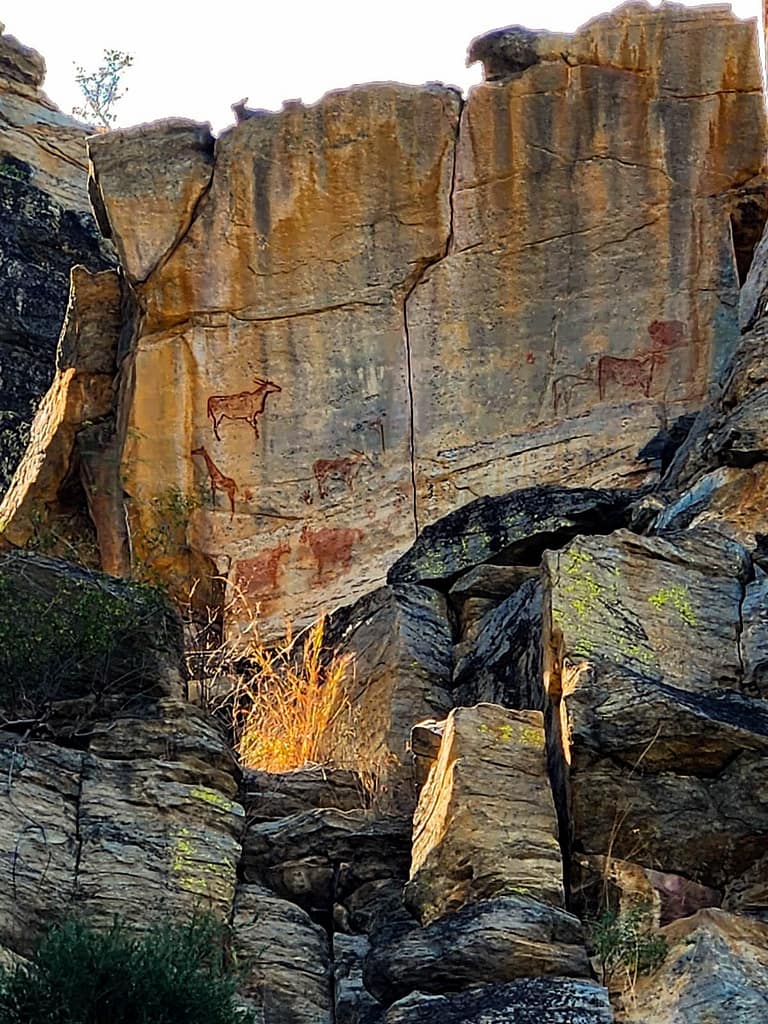
Accommodation: Xaro Lodge, Botswana
Its time to go and visit the vast and exclusive Selinda Reserve. In this pristine 130,000 hectare reserve, between the Okavango and Chobe, some of Botswana’s most iconic species abound. The Selinda Reserve seamlessly connects with the Okavango Delta as well as the Chobe National Park. There is nothing ordinary or mainstream about this destination. It is all about unique, remote and wildlife-rich wilderness areas completely natural and exclusive.
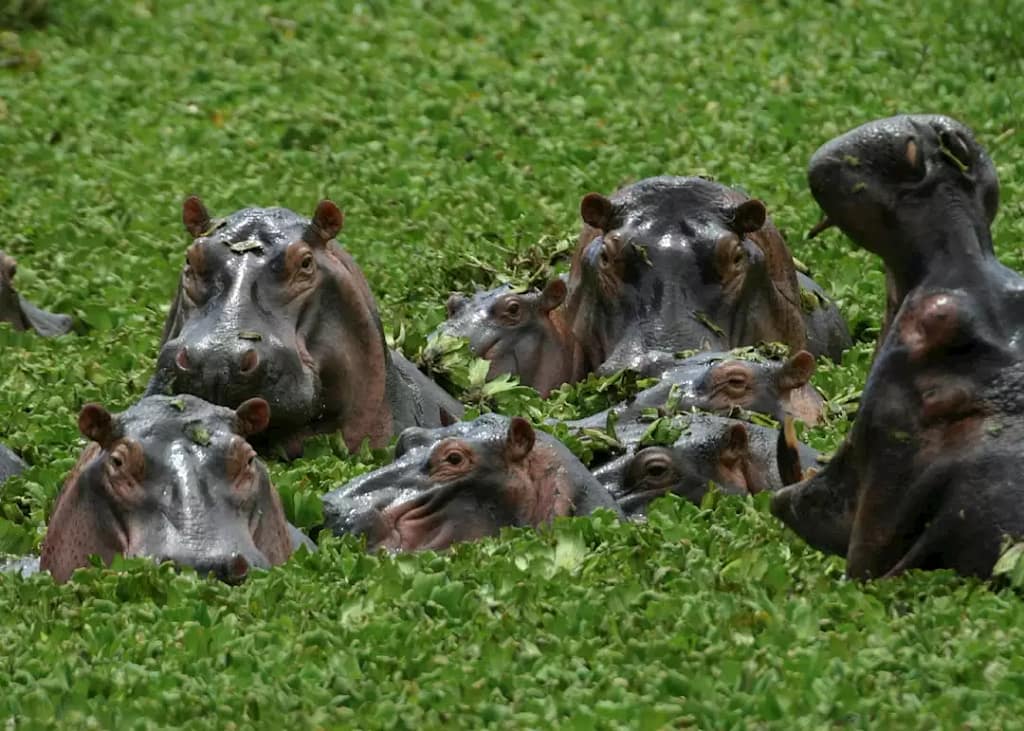
Accommodation (Full board): Zarafa Camp, Botswana
Next you will be heading deep in the Khwai Private Reserve, where you will be able to get a thrilling and fun way of experiencing the African bush for a night under the stars. Here you will experience a sky bed overlooking a busy waterhole which attracts wildlife from miles around. Memories of listening to the elephants drinking at night as you gaze at the stars from your bed will stay with you long after you leave.
This is a unique concept providing an excellent way to experience the African bush and the Okavango Delta from five meter high semi-thatched hides, allowing guests the opportunity to sleep under the stars with just a mosquito net separating them from the wild. It is an extremely intimate experience. The main area consists of a two story raised deck, with simple table and chairs where sundowners and meals are taken.
The hides here are three-story raised platforms, comfortably rustic they provide everything you need in the bush with fully enclosed bathrooms under each hide and private changing areas. Wholesome meals are cooked on the campfire and are served under the stars.
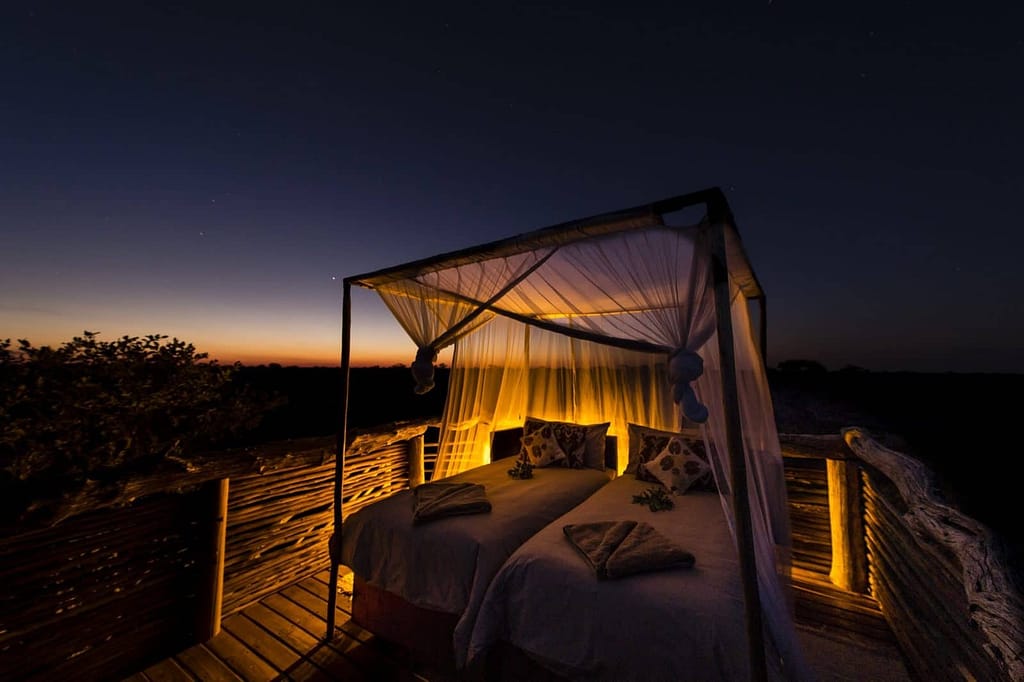
Accommodation (All-inclusive): Skybeds, Botswana
After breakfast its time to head to a hidden gem set on the Xudum River in the southwest Okavango. A luxurious tented camp traditionally offering both water and land activities, it also boasts excellent game viewing. The area encompasses a necklace of islands dotted with palms, figs, ebony and knobthorn trees, and is home to a myriad of birds, plants and animals. Set on a private concession, activities at Kanana include game drives, walking, a sleep out option, as well as boating and mokoro dependent on water.
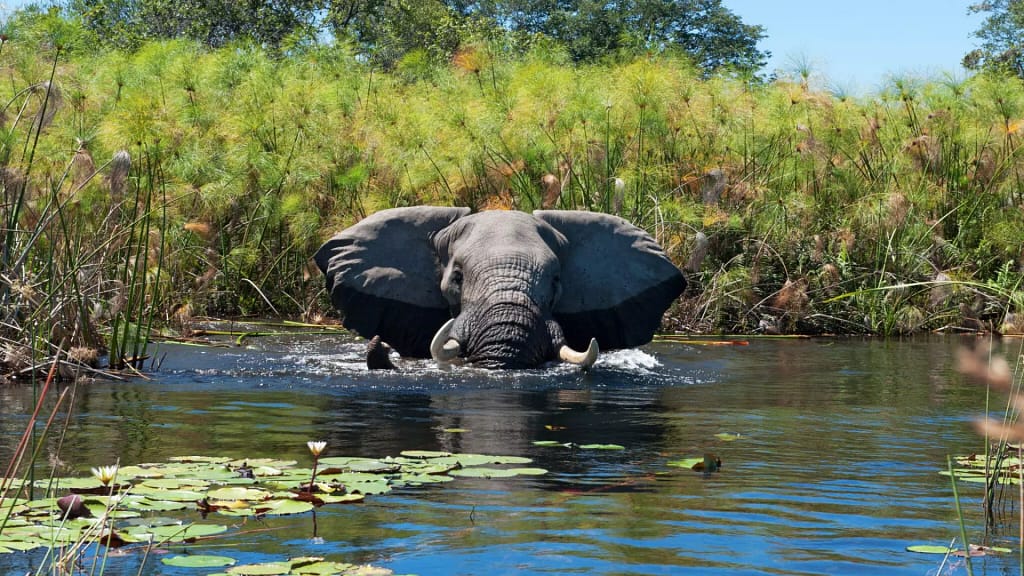
Accommodation (All-inclusive): Kanana Camp, Botswana
Its time to go deeper in the Delta, your home will be set on the Jao concession in the north western Okavango, the camp is surrounded by some of the most beautiful scenery to be found anywhere in this pristine wilderness. Your home here will be one of the most opulent camps in the Okavango with five suites and two villas. Each villas comes with its own private vehicle, guide, chef and butler.
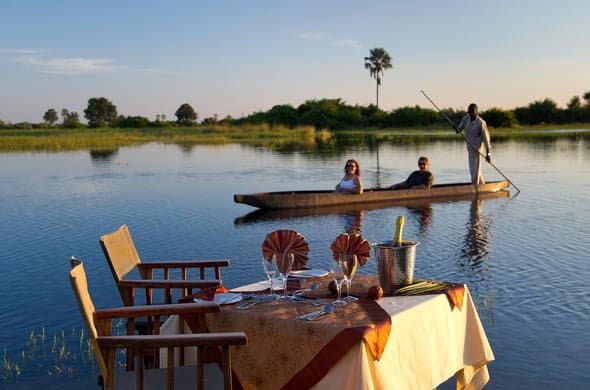
Accommodation (All-inclusive): Jao Camp, Botswana
Today you will go explore a different area of Botswana. On the edge of the Makgadikgadi Salt Pans, beneath the rattling palms on Hyena Island your new home is awaiting. This is a simple and relaxed camp with buckets of charm and an ideal base for guests exploring the Kalahari salt pans. The desert safari experience here is excellent, with a captivating list of activities including game drives, San bushman walks, quad biking and meerkat visits. Popular with all looking for something different, especially families.
A varied menu of activities is bound to keep you busy as throughout the year guests are invited to get acquainted with the semi- habituated meerkats that Kalahari is famous for. Game drives are offered in the morning and afternoon, as well as night drives where the lesser known nocturnal animals such as the brown hyena, aardwolf and bat-eared foxes steal the show. Informative walks through the desert are offered throughout the year as well.
From Camp Kalahari guests can experience first- hand the culture of the Zu’/Hoasi Bushmen who call this arid landscape home. The experience here is sensitively done and not contrived, it is one of the best such experiences in Botswana. Join the Bushmen on a walk as they share wisdom and knowledge from their own descendants – much of which enables them to adapt and survive in this challenging environment.
Exciting two-hour horseback safari adventures can be enjoyed at an additional cost by all levels of riders. Popular too, during high season, are the quad bike excursions across the salt-crusted pans to Kubu Island for 2 nights (kindly enquire regarding cost).
During the period between November and April, Camp Kalahari is an ideal base from which to witness the incredible zebra/wildebeest migration -the longest land mammal migration known to us.
The desert adapted species found here offer a complete contrast to the game viewing in the Okavango and make an interesting contrast to the Okavango, combining both areas is highly recommended to appreciate the incredible environmental diversity in northern Botswana. The famous black maned Kalahari lion is a highlight for many, as well as the cheetah, brown hyena, oryx, springbok, bat eared foxes, ostrich, as well as many of the more familiar species from the delta. The birding is varied and excellent, especially in the green season.
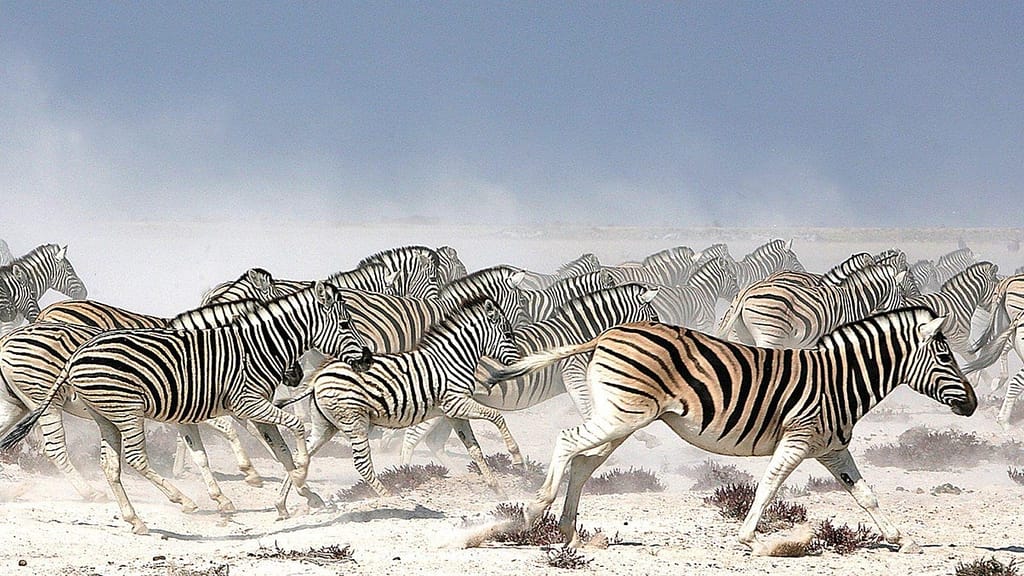
Accommodation (All-inclusive): Camp Kalahari, Botswana
After breakfast it is time to depart back to Maun, where you will stay 1 night before going back to the airport, in time to check in for your flight back home.
Accommodation (Breakfast included): Semowi Lodge, Botswana
Make this trip yours
The above described itineraries is not complete and misses a lot of info. Make this trip yours and you will get the detailed itinerary, with detailed info on where to go, what to see, how long to stay at each place, which accommodations you can consider each day, the prices and google maps that you can use. Its a complete plan.
About the locations
Okavango Panhandle:
Okavango Delta:
Makgadikgadi Pans:
Maun:
Inclusions
Included
- All activities (if mentioned in the plan and unless labeled as optional)
- All accommodation (Unless listed as upgrade)
- All Taxes/VAT
- Meals( As specified in the day-by-day section)
Excluded
- International flights (From/to home)
- All flights during the tour
- Park fees (For non-residents)
- Additional accommodation before and at the end of the trip
- Personal items (Souvenirs, travel insurance, visa fees, etc.)
- Government imposed increase of taxes and/or park fees
Practical info
Weather and best time to visit?
Botswana has two seasons really – summer and winter. The Summer (also known as the green season) runs from November through to April and the Winter (aka dry season) from May to October. Botswana doesn’t really have a Spring and Fall. Unlike the Northern hemisphere, there is less rain in the winter but the temperatures are lower. In fact, the temperatures first thing in the morning can get as low as 9-10 Celsius (50 Fahrenheit). It does warm up quickly though with average daytime temperatures in the mid-20s Celsius (70 Fahrenheit). As there is more rain in the Summer it can be often referred to as a wet season or rainy season which doesn’t sound very appealing. Residents of places like Europe and North America associate rain with endless drizzle and miserable grey skies which just isn’t the case in Africa. Often days in the summer months start with glorious warm sunshine that maintains throughout the day and then clouds start to build in the afternoon. On most days there will then be a huge downpour that lasts no more than 15-30 minutes and then it breaks back to clear skies again. This can be wonderfully dramatic with dark moody skies leading to some compelling imagery.
Traveling with minor children to Botswana:
You are responsible for having the correct travel documents. We emphasize the rules for traveling with children. Strict rules apply to Botswana, which means that you are required to be in possession of an original birth certificate of your child(ren) (international and English). If you do not have this original birth certificate with the original stamp, you might not be allowed on the flight. Should the minor be travelling with one parent only, then a letter of consent from the other parent should the minor be travelling with one parent.
Are vaccinations mandatory in Botswana?
No vaccinations are required for Botswana. A vaccination against DTP and hepatitis A is recommended. Be well prepared and therefore seek advice in advance. If you make a stopover on your way to Botswana in a country where yellow fever occurs, you must have a vaccination (stamp) upon entry. Botswana has a risk of malaria; High risk: Year round in areas north of Maun and Pits including the Okavango Delta and Chobe, Moremi, Sibuyu National Parks. From September to May in the remaining northern half of the country below Maun. Low risk: From June to August in the remaining northern half of the country below Maun. And upper southern half of the country. No malaria: Lower southern half of the country, Gaborone. Minimal risk: South central half of the country. Wear long-sleeved protective clothing as much as possible, especially at sunset, and regularly spray anti-mosquito spray with 30-50% DEET.
Is it safe in Botswana?
Botswana is considered one of the safest countries in Africa to travel in. Tourism is welcomed and valued by the locals in general, as it brings opportunities and income. There is no reason for you to feel unsafe anywhere in Botswana, as there have been very few reported incidents of petty theft or other opportunistic crimes.
What language in Botswana?
Setswana is the national language with minor differences in dialect notable around the country. English is the official business language, and it is widely spoken in urban areas with most written communication being in this language.
What do I take with me to Botswana?
Below is a list of luggage items that will definitely come in handy:
- light casual clothing during the day, warm sweater or jacket for the morning/evening.
- warm fleece, scarf, gloves and hat in cold winter months
- well-fitting walking shoes and slippers (useful when showering on safari)
- swimwear, many hotels and lodges have swimming pools.
- Sunscreen, sunglasses and hat/cap, lip balm (strong sun, very dry)
- On safari: sleeping bag (also available for rent) and a small travel pillow is useful.
- Water bottle, 2 liters or 2 separate ones. You should continue to drink a lot, especially in the summer.
- Flashlight, headlamp and possibly binoculars.
How do I pay in Botswana?
The currency in Botswana is Pula, a Tswana word meaning “rain”. Pula is used throughout the country and is the accepted form of payment in restaurants, shops, hotels, or lodges. Most places in Maun, Kasane, Francistown, Gaborone, and other major towns accept international bank cards. ATMs are located in the towns mentioned above, and you can withdraw cash before heading into the parks and reserves, where there are unlikely to be card facilities. Foreign currency is often accepted as a tip or gratuity to helpful staff and safari guides, but not as payment for something in commercial facilities.
What to eat in Botswana?
This country has a huge variety of traditional dishes, the ingredients of which include meat from different animals, cereals, nuts, fruit, as well as fish and seafood. Among the varieties of meat to eat in Botswana, besides the usual beef, goat, and deer you can find giraffe, ostrich meat and oryx meat. As for seafood, oysters, lobsters, and clams are high-quality products that you can eat in Botswana. For its part, tuna is the preferred fish, which is prepared in different ways. Finally, as for fruit, you can savor papayas, bananas, and delicious avocados.
Which plug do I take with me to Botswana?
The sockets in Botswana work on 220-240 volts and have 3 thick round poles. Or 3 rectangular pins.
Tap water?
Tap water in Botswana is well purified and safe to drink. The exception are the remote camp sites. Naturally, bottled mineral water is also available for purchase.
Getting there
Getting There
This tour starts in Maun and ends in Maun, Botswana
We can help select your international flights
Fly to Maun (MUB)
Fly back from Maun Airport (MUB)
A transfer from and back to the airport is included
Additional accommodation before and at the end of the trip can be arranged for an extra cost
Important to know
Important to Know
- Rates are per person and exclude the international flight from/to your home country.
Disclaimer
- We reserve the right to change rates advertised on this website.
- If you request changes to this trip, the advertised rates will likely change.
- Rates do not include a budget for flights between camps during this trip. We can help you acquire the flight costs.
- The exact order, contents and rates of this tour are subject to availability.
- If an accommodation is fully booked, we will suggest a comparable alternative.
Botswana Desert & Delta Northern Parks Fly-In Safari
Best time to visit: May to October
How long: 10 nights
Price: From €5900 pp excl. flights (based on 2 people sharing)
Fly into Victoria Falls, Zimbabwe, where you will be transported to your hotel. The next 2 days you have time to explore the Victoria Falls (walking distance), enjoy a sunset river cruise perhaps, a helicopter ride over the Falls, and much more.
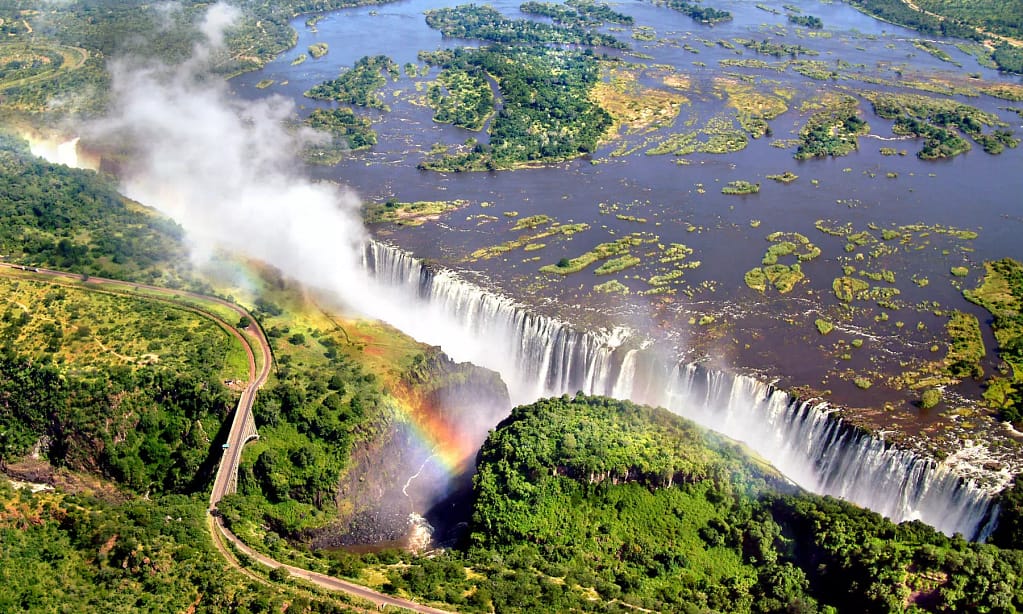
Accommodation: Victoria Falls Backpackers Lodge, Zimbabwe
Time for your first safari! The next couple of days you can enjoy Chobe National Park, by traditional game drives in the park and by boat safaris on the Chobe River. Chobe Safari Lodge is set along the scenic Chobe River and a 5-minute walk from the entrance of the picturesque Chobe National Park. You are on game drive from the minute you leave the lodge.
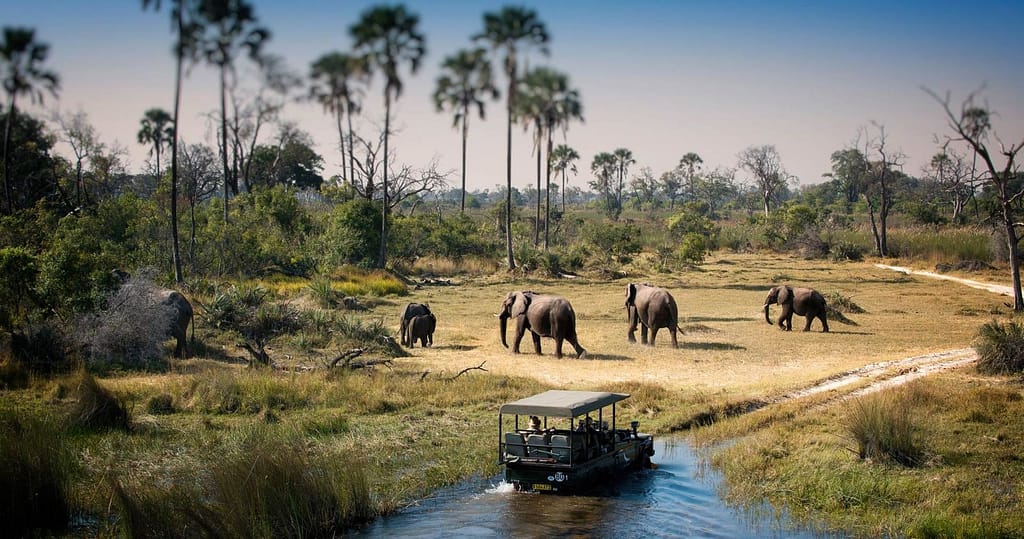
Accommodation (Full board): Chobe Safari Lodge, Botswana
The next stop is Savuti area. Activities are organised around game drives throughout the Savute area in open 4×4 safari vehicles. Many trips will incorporate a visit to the Savute Marsh to give you a chance to see the historic presence of the Savute Channel at the marsh against a backdrop of teeming wildlife.
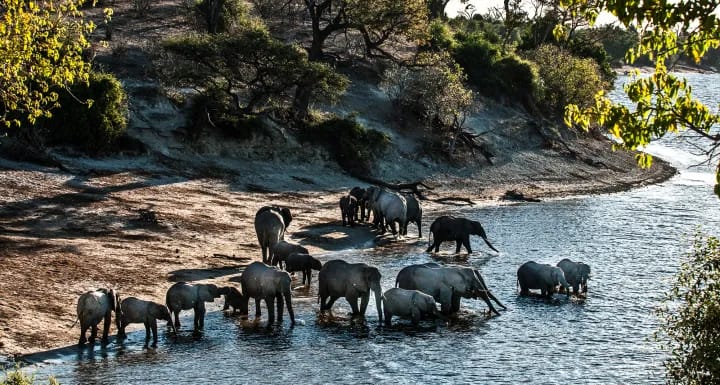
Accommodation (All-inclusive): Ghoha Hills Savuti Lodge, Botswana
In Moremi you can enjoy Game drives conducted in open 4×4 vehicles in the morning and late afternoons, which offer excellent game viewing including frequent sightings of lion, leopard and cheetah as well as wild dog. Alternatively, guest can explore the Xakanaxa Lagoon and surrounding Okavango channels by boating safari.
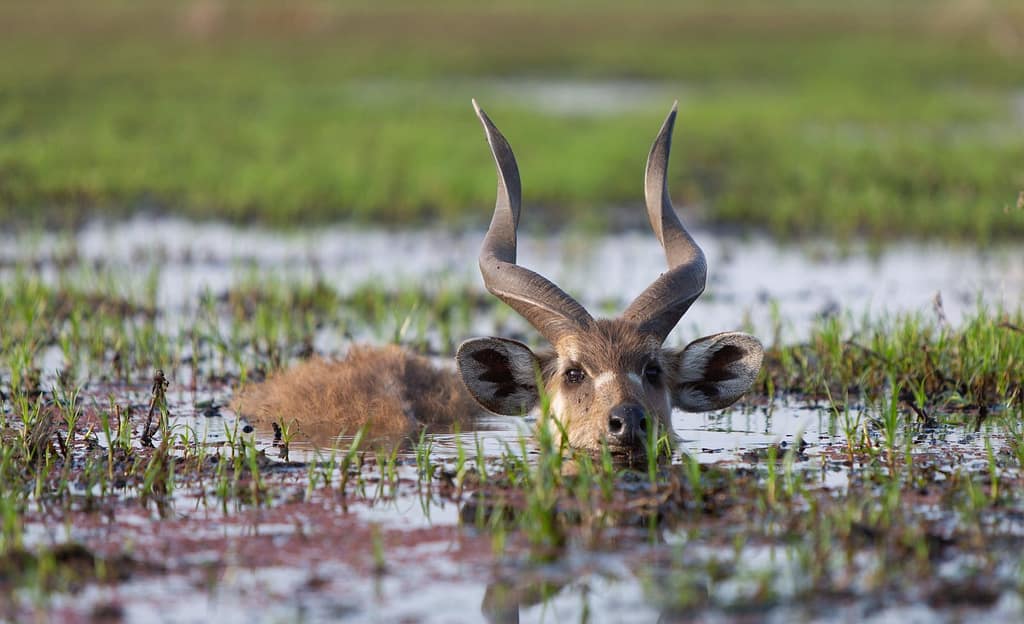
Accommodation (All-inclusive): O Bona Moremi Safari Lodge, Botswana
Leroo La Tau rises majestically above the Boteti River which stretches across the western border of the Makgadikgadi Pans National Park.
The park, populated by up to 30,000 zebra and wildebeest closely accompanied by predators, offers guests the chance to experience the exhilaration of seeing large concentrations of game and the resultant predator interaction. The lodge offers a raised hide above the river where guests can enjoy the spectacular wildlife sightings that we’ve come to expect in this part of Botswana.
Having explored the area and enjoyed a spectacular wildlife phenomenon on guided day and night game drives, guests can retire after dinner to a splendid fireplace overlooking the river. An optional day trip to Nxai Pan National Park.
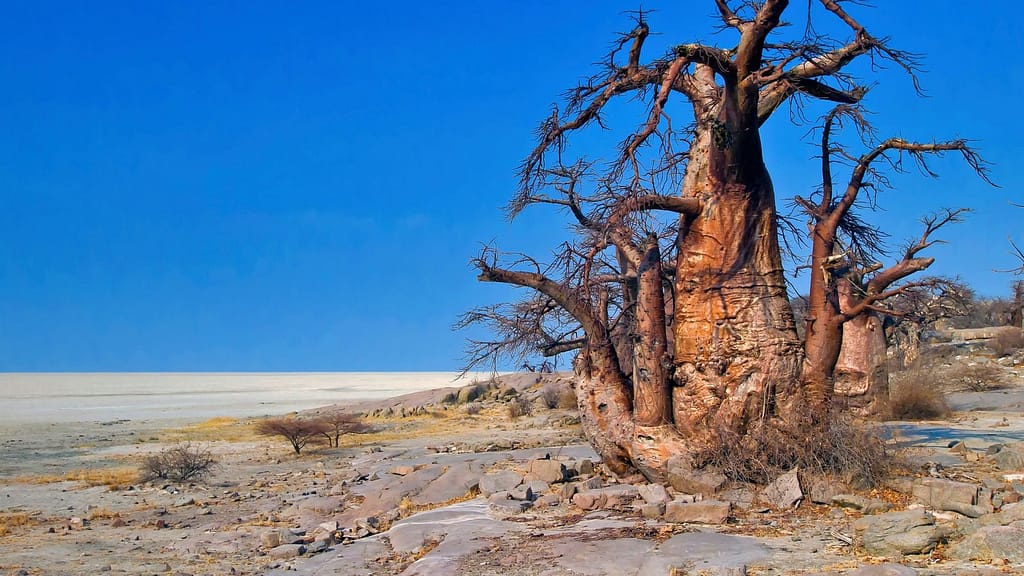
Accommodation (All-inclusive): Leroo La Tau, Botswana
After breakfast it is time to depart to the airstrip for a short flight to Maun airport, in time to check in for your flight back home.
Make this trip yours
The above described itineraries is not complete and misses a lot of info. Make this trip yours and you will get the detailed itinerary, with detailed info on where to go, what to see, how long to stay at each place, which accommodations you can consider each day, the prices and google maps that you can use. Its a complete plan.
About the locations
Victoria Falls
Chobe National Park:
Savuti – Chobe National Park:
Moremi Game Reserve
Boteti River – Makgadikgadi Pans
Inclusions
Included
- All activities (if mentioned in the plan and unless labeled as optional)
- All accommodation (Unless listed as upgrade)
- All Taxes/VAT
- Meals( As specified in the day-by-day section)
Excluded
- International flights (From/to home)
- All flights during the tour
- Park fees (For non-residents)
- Additional accommodation before and at the end of the trip
- Personal items (Souvenirs, travel insurance, visa fees, etc.)
- Government imposed increase of taxes and/or park fees
Practical info
Weather and best time to visit?
Botswana has two seasons really – summer and winter. The Summer (also known as the green season) runs from November through to April and the Winter (aka dry season) from May to October. Botswana doesn’t really have a Spring and Fall. Unlike the Northern hemisphere, there is less rain in the winter but the temperatures are lower. In fact, the temperatures first thing in the morning can get as low as 9-10 Celsius (50 Fahrenheit). It does warm up quickly though with average daytime temperatures in the mid-20s Celsius (70 Fahrenheit). As there is more rain in the Summer it can be often referred to as a wet season or rainy season which doesn’t sound very appealing. Residents of places like Europe and North America associate rain with endless drizzle and miserable grey skies which just isn’t the case in Africa. Often days in the summer months start with glorious warm sunshine that maintains throughout the day and then clouds start to build in the afternoon. On most days there will then be a huge downpour that lasts no more than 15-30 minutes and then it breaks back to clear skies again. This can be wonderfully dramatic with dark moody skies leading to some compelling imagery.
Traveling with minor children to Botswana:
You are responsible for having the correct travel documents. We emphasize the rules for traveling with children. Strict rules apply to Botswana, which means that you are required to be in possession of an original birth certificate of your child(ren) (international and English). If you do not have this original birth certificate with the original stamp, you might not be allowed on the flight. Should the minor be travelling with one parent only, then a letter of consent from the other parent should the minor be travelling with one parent.
Are vaccinations mandatory in Botswana?
No vaccinations are required for Botswana. A vaccination against DTP and hepatitis A is recommended. Be well prepared and therefore seek advice in advance. If you make a stopover on your way to Botswana in a country where yellow fever occurs, you must have a vaccination (stamp) upon entry. Botswana has a risk of malaria; High risk: Year round in areas north of Maun and Pits including the Okavango Delta and Chobe, Moremi, Sibuyu National Parks. From September to May in the remaining northern half of the country below Maun. Low risk: From June to August in the remaining northern half of the country below Maun. And upper southern half of the country. No malaria: Lower southern half of the country, Gaborone. Minimal risk: South central half of the country. Wear long-sleeved protective clothing as much as possible, especially at sunset, and regularly spray anti-mosquito spray with 30-50% DEET.
Is it safe in Botswana?
Botswana is considered one of the safest countries in Africa to travel in. Tourism is welcomed and valued by the locals in general, as it brings opportunities and income. There is no reason for you to feel unsafe anywhere in Botswana, as there have been very few reported incidents of petty theft or other opportunistic crimes.
What language in Botswana?
Setswana is the national language with minor differences in dialect notable around the country. English is the official business language, and it is widely spoken in urban areas with most written communication being in this language.
What do I take with me to Botswana?
Below is a list of luggage items that will definitely come in handy:
- light casual clothing during the day, warm sweater or jacket for the morning/evening.
- warm fleece, scarf, gloves and hat in cold winter months
- well-fitting walking shoes and slippers (useful when showering on safari)
- swimwear, many hotels and lodges have swimming pools.
- Sunscreen, sunglasses and hat/cap, lip balm (strong sun, very dry)
- On safari: sleeping bag (also available for rent) and a small travel pillow is useful.
- Water bottle, 2 liters or 2 separate ones. You should continue to drink a lot, especially in the summer.
- Flashlight, headlamp and possibly binoculars.
How do I pay in Botswana?
The currency in Botswana is Pula, a Tswana word meaning “rain”. Pula is used throughout the country and is the accepted form of payment in restaurants, shops, hotels, or lodges. Most places in Maun, Kasane, Francistown, Gaborone, and other major towns accept international bank cards. ATMs are located in the towns mentioned above, and you can withdraw cash before heading into the parks and reserves, where there are unlikely to be card facilities. Foreign currency is often accepted as a tip or gratuity to helpful staff and safari guides, but not as payment for something in commercial facilities.
What to eat in Botswana?
This country has a huge variety of traditional dishes, the ingredients of which include meat from different animals, cereals, nuts, fruit, as well as fish and seafood. Among the varieties of meat to eat in Botswana, besides the usual beef, goat, and deer you can find giraffe, ostrich meat and oryx meat. As for seafood, oysters, lobsters, and clams are high-quality products that you can eat in Botswana. For its part, tuna is the preferred fish, which is prepared in different ways. Finally, as for fruit, you can savor papayas, bananas, and delicious avocados.
Which plug do I take with me to Botswana?
The sockets in Botswana work on 220-240 volts and have 3 thick round poles. Or 3 rectangular pins.
Tap water?
Tap water in Botswana is well purified and safe to drink. The exception are the remote camp sites. Naturally, bottled mineral water is also available for purchase.
Getting there
Getting There
This tour starts in Victoria Falls, Zimbabwe and ends in Maun, Botswana
We can help select your international flights
Fly to Victoria Falls Airport (VFA)
Fly back from Maun Airport (MUB)
A transfer from and back to the airport is included
Additional accommodation before and at the end of the trip can be arranged for an extra cost
Important to know
Important to Know
- Rates are per person and exclude the international flight from/to your home country.
Disclaimer
- We reserve the right to change rates advertised on this website.
- If you request changes to this trip, the advertised rates will likely change.
- Rates do not include a budget for flights between camps during this trip. We can help you acquire the flight costs.
- The exact order, contents and rates of this trip are subject to availability.
- If an accommodation is fully booked, we will suggest a comparable alternative.
Botswana: a luxury family safari holiday
Best time to visit: May to October
How long: 9 nights
Price: From €10.500 pp excl. flights (based on 2 people sharing)
Fly into Maun, where you will be transported to your hotel where you can relax a bit. If you have time left visit the Nhabe Museum. You can also check out the Maun Environmental Education Centre or the Riversdam Aquarium.
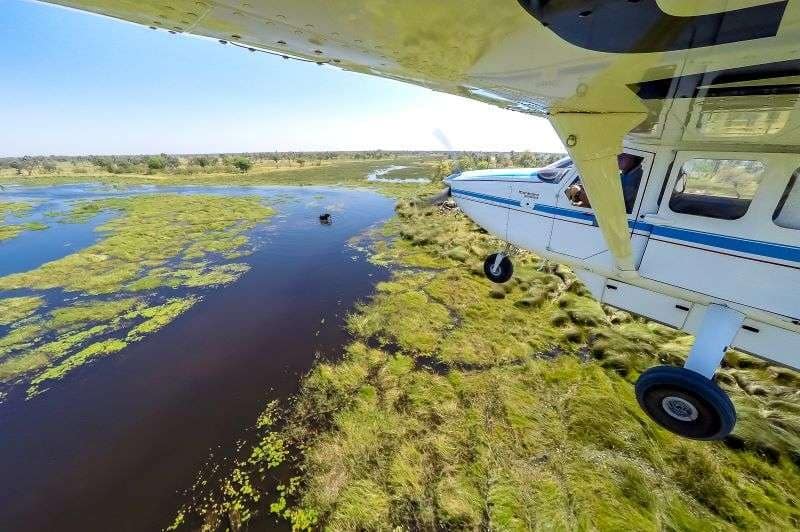
Accommodation (breakfast included): The Waterfront, Maun
Wake up on the second day, have breakfast and then head to Maun airport to catch a 40 minutes flight with a light aircraft to Duke’s Camp deep in the Okavango Delta. During the flight you will have an extraordinary sight of the beautiful green wetlands of the Delta spreading out below you. Duke’s camp is set on a private concession ensuring not only exclusivity away from the crowds but more flexible activities too. Morning, afternoon and night game drives are the perfect way to discover this varied concession, home to a wide variety of wildlife. This will be your home for the next three nights with full board included.
When water levels permit guests at Duke’s Camp have the opportunity of exploring the glistening channels by boat and mokoro (dugout canoe) safari. Boating offers the chance for bigger animal sightings like hippo, elephant and buffalo. While Mokoro excursions are a chance to enjoy a slower safari and time to focus on the smaller but equally special aspects of the Okavango Delta. Poling through the clear shallows of the Okavango your local expert will explain about local life on the channels of the Okavango Delta and introduce you to the fauna and flora of this unique environment. For those looking for a more personal experience of the bush a nature walk through this wilderness can be arranged with your guide.
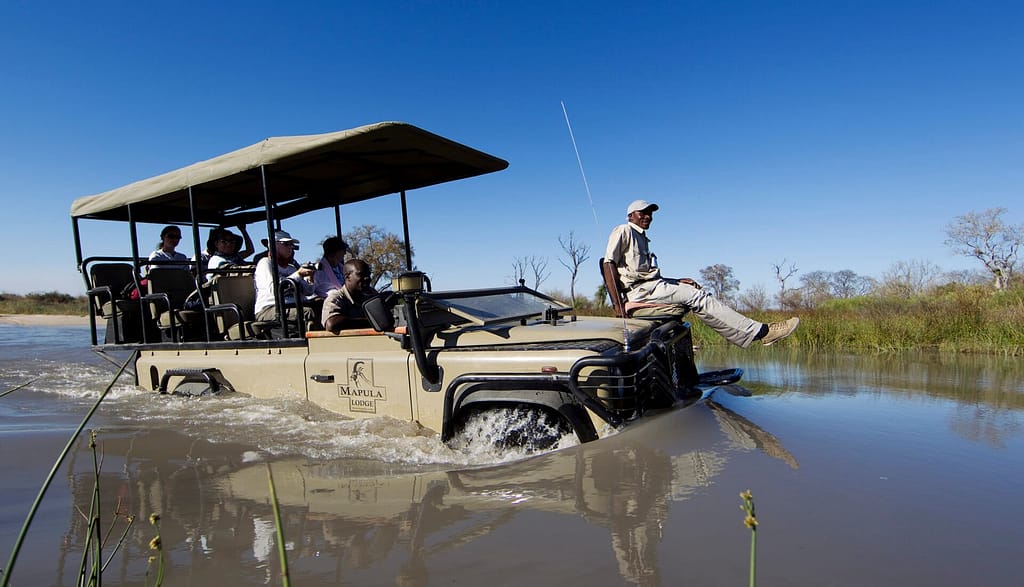
Accommodation (Full board): Duke’s Camp
You will now head back to your next destination within the Okavango Delta. Hyena Pan Camp overlooks a watering hole deep within the Khwai Private Reserve. Best experienced in the dry season when the waterhole attracts huge numbers of elephants and other animals. The photo hide is a great experience. You will spend 2 nights here. Activities are 4×4 game drives and walking safaris.
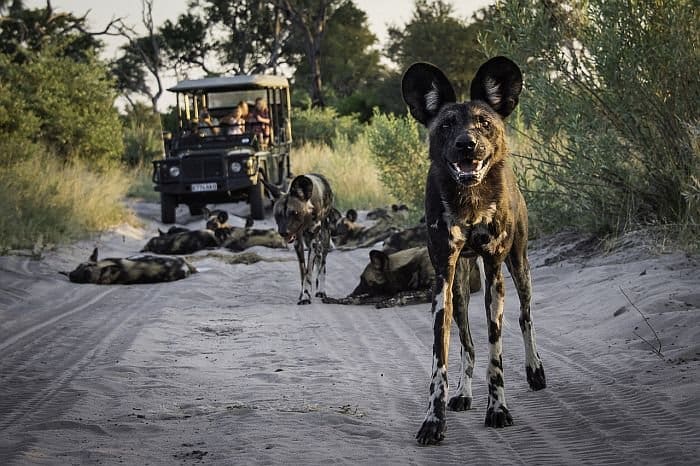
Accommodation (Full board): Hyena Pan Camp
Move north to Chobe National Park. You can choose to explore the landscapes and wildlife around the Savuti and Linyanti Marshes, or head to the park’s north for cruises and game drives along the mighty Chobe River.

Accommodation (All-inclusive): Ghoha Hills Savuti Lodge
To everything comes an end and today you can fly back to Maun by light airflight to rest one more night before you depart to your home country. Or you can choose to extend your stay and go the Victoria Falls which is nearby from here or choose another destination to continue your journey.
Make this trip yours
The above described itineraries is not complete and misses a lot of info. Make this trip yours and you will get the detailed itinerary, with detailed info on where to go, what to see, how long to stay at each place, which accommodations you can consider each day, the prices and google maps that you can use. Its a complete plan.
About the locations
Maun:
The Okavango Delta:
Chobe National Park:
Inclusions
Included
- All activities (if mentioned in the plan and unless labeled as optional)
- All accommodation (Unless listed as upgrade)
- All Taxes/VAT
- Meals( As specified in the day-by-day section)
Excluded
- International flights (From/to home)
- All flights during the tour
- Park fees (For non-residents)
- Additional accommodation before and at the end of the trip
- Personal items (Souvenirs, travel insurance, visa fees, etc.)
- Government imposed increase of taxes and/or park fees
Practical info
Weather and best time to visit?
Botswana has two seasons really – summer and winter. The Summer (also known as the green season) runs from November through to April and the Winter (aka dry season) from May to October. Botswana doesn’t really have a Spring and Fall. Unlike the Northern hemisphere, there is less rain in the winter but the temperatures are lower. In fact, the temperatures first thing in the morning can get as low as 9-10 Celsius (50 Fahrenheit). It does warm up quickly though with average daytime temperatures in the mid-20s Celsius (70 Fahrenheit). As there is more rain in the Summer it can be often referred to as a wet season or rainy season which doesn’t sound very appealing. Residents of places like Europe and North America associate rain with endless drizzle and miserable grey skies which just isn’t the case in Africa. Often days in the summer months start with glorious warm sunshine that maintains throughout the day and then clouds start to build in the afternoon. On most days there will then be a huge downpour that lasts no more than 15-30 minutes and then it breaks back to clear skies again. This can be wonderfully dramatic with dark moody skies leading to some compelling imagery.
Traveling with minor children to Botswana:
You are responsible for having the correct travel documents. We emphasize the rules for traveling with children. Strict rules apply to Botswana, which means that you are required to be in possession of an original birth certificate of your child(ren) (international and English). If you do not have this original birth certificate with the original stamp, you might not be allowed on the flight. Should the minor be travelling with one parent only, then a letter of consent from the other parent should the minor be travelling with one parent.
Are vaccinations mandatory in Botswana?
No vaccinations are required for Botswana. A vaccination against DTP and hepatitis A is recommended. Be well prepared and therefore seek advice in advance. If you make a stopover on your way to Botswana in a country where yellow fever occurs, you must have a vaccination (stamp) upon entry. Botswana has a risk of malaria; High risk: Year round in areas north of Maun and Pits including the Okavango Delta and Chobe, Moremi, Sibuyu National Parks. From September to May in the remaining northern half of the country below Maun. Low risk: From June to August in the remaining northern half of the country below Maun. And upper southern half of the country. No malaria: Lower southern half of the country, Gaborone. Minimal risk: South central half of the country. Wear long-sleeved protective clothing as much as possible, especially at sunset, and regularly spray anti-mosquito spray with 30-50% DEET.
Is it safe in Botswana?
Botswana is considered one of the safest countries in Africa to travel in. Tourism is welcomed and valued by the locals in general, as it brings opportunities and income. There is no reason for you to feel unsafe anywhere in Botswana, as there have been very few reported incidents of petty theft or other opportunistic crimes.
What language in Botswana?
Setswana is the national language with minor differences in dialect notable around the country. English is the official business language, and it is widely spoken in urban areas with most written communication being in this language.
What do I take with me to Botswana?
Below is a list of luggage items that will definitely come in handy:
- light casual clothing during the day, warm sweater or jacket for the morning/evening.
- warm fleece, scarf, gloves and hat in cold winter months
- well-fitting walking shoes and slippers (useful when showering on safari)
- swimwear, many hotels and lodges have swimming pools.
- Sunscreen, sunglasses and hat/cap, lip balm (strong sun, very dry)
- On safari: sleeping bag (also available for rent) and a small travel pillow is useful.
- Water bottle, 2 liters or 2 separate ones. You should continue to drink a lot, especially in the summer.
- Flashlight, headlamp and possibly binoculars.
How do I pay in Botswana?
The currency in Botswana is Pula, a Tswana word meaning “rain”. Pula is used throughout the country and is the accepted form of payment in restaurants, shops, hotels, or lodges. Most places in Maun, Kasane, Francistown, Gaborone, and other major towns accept international bank cards. ATMs are located in the towns mentioned above, and you can withdraw cash before heading into the parks and reserves, where there are unlikely to be card facilities. Foreign currency is often accepted as a tip or gratuity to helpful staff and safari guides, but not as payment for something in commercial facilities.
What to eat in Botswana?
This country has a huge variety of traditional dishes, the ingredients of which include meat from different animals, cereals, nuts, fruit, as well as fish and seafood. Among the varieties of meat to eat in Botswana, besides the usual beef, goat, and deer you can find giraffe, ostrich meat and oryx meat. As for seafood, oysters, lobsters, and clams are high-quality products that you can eat in Botswana. For its part, tuna is the preferred fish, which is prepared in different ways. Finally, as for fruit, you can savor papayas, bananas, and delicious avocados.
Which plug do I take with me to Botswana?
The sockets in Botswana work on 220-240 volts and have 3 thick round poles. Or 3 rectangular pins.
Tap water?
Tap water in Botswana is well purified and safe to drink. The exception are the remote camp sites. Naturally, bottled mineral water is also available for purchase.
Getting there
Getting There
This tour starts in Maun and ends in Maun, Botswana
We can help select your international flights
Fly to Maun Airport (MUB)
Fly back from Maun Airport (MUB)
A transfer from and back to the airport is included
Additional accommodation before and at the end of the trip can be arranged for an extra cost
Important to know
Important to Know
- Rates are per person and exclude the international flight from/to your home country.
Disclaimer
- We reserve the right to change rates advertised on this website.
- If you request changes to this trip, the advertised rates will likely change.
- Rates do not include a budget for flights between camps during this trip. We can help you acquire the flight costs.
- The exact order, contents and rates of this tour are subject to availability.
- If an accommodation is fully booked, we will suggest a comparable alternative.
If you already have a plan of what to do and where to go, and you only would like us to check it and provide some insights and tips, we can help you with that too.
How does it work?
- You let us know your plan and what you need help with.
- You pay a small service fee of 30 Euro.
- We do the research for you (it doesn’t matter how large the group is), depending on your budget and what you want to do and when.
- We come back to you with our review of your plan and our suggestions.
- You decide if you want to make arrangements following our suggestions or make some changes to it.
What will you get?
- You will get a response from us within 1-2 working days.
- You will get new ideas of things to do or places to stay at that are really worth it in our opinion (depending on your budget and the places you want to see).
- You will not waste hours of research on what to do and where to stay and maybe surprise your loved ones with a really great adventure that is well thought about.
- Your travel plan will be reviewed based on your budget and what you like to do.
- It will include hotel choices per day (we are independent and do not earn anything from any hotel or tour operator).
- Extra 30 Euro: If needed, you can select this option; We will get you a detailed day by day plan of the things to do in the place of your interest, and where you can arrange it.
- Extra 20 Euro: If needed, you can select this option; Airplane ticket costs will be compared and given to you the best options in our opinion, with several choices of departure dates. (We are very experienced in this, you might save a lot on ticket costs using this service)
Book this service
Why should you travel to Botswana with us?
Imagine immersing yourself in the pristine wilderness, where majestic elephants roam freely and the rhythmic sounds of the African bush are your constant companion. Botswana, renowned for its stunning landscapes and abundant wildlife, offers one of the most authentic and unforgettable safari experiences on the planet.
Unparalleled Wildlife Encounters
Botswana is home to some of Africa’s most iconic wildlife. From the lush Okavango Delta, a UNESCO World Heritage Site teeming with diverse species, to the vast savannas of Chobe National Park, famous for its large elephant herds, every moment in Botswana promises breathtaking wildlife encounters.
Spectacular Natural Beauty
The country’s varied landscapes, from the serene waterways of the Okavango Delta to the stark beauty of the Kalahari Desert, provide a backdrop of unparalleled beauty. Witness the dramatic contrasts and unspoiled nature that make Botswana a paradise for nature lovers and photographers alike.
Exclusive and Intimate Experiences
Botswana offers a sense of exclusivity and privacy rarely found in other safari destinations. With its commitment to sustainable tourism and low-impact travel, you can explore this magnificent country without the crowds, enjoying intimate and personal wildlife experiences.
Rich Cultural Heritage
Beyond its natural wonders, Botswana boasts a rich cultural heritage. Engage with local communities and learn about the traditions and lifestyles of the indigenous people, adding a deeper, more meaningful dimension to your travel experience.
Embark on a journey to Botswana and discover a world where nature reigns supreme and every day is an adventure. Whether it’s your first safari or your tenth, Botswana will captivate your heart and leave you with memories to last a lifetime.
Ready to plan your tailor-made trip?
Whether you travel for business, pleasure or both, we can equip you with information, inspiration and a comprehensive itinerary. Try us. We are really good and can save you time, energy and cost.
From us you will get the travel plan and the details where to book and arrange everything. So you will be paying the accommodations and flights yourself. This is all done so you have total control over your spendings and you don’t over pay like double the price or more with other travel agents. With this small fee we cover our research time and you get to have the best deals and the finest experiences.
It will be very detailed and very clear, not like in the above examples, but with maps that you can use (google) and clear names where to go, clearly showing how long to stay and day by day in details what the plan is.
Weekend: 30 euro
1-2 weeks: 70 euro
3-4 weeks: 140 euro
5-8 weeks: 280 euro
9+ weeks: 500 euro
